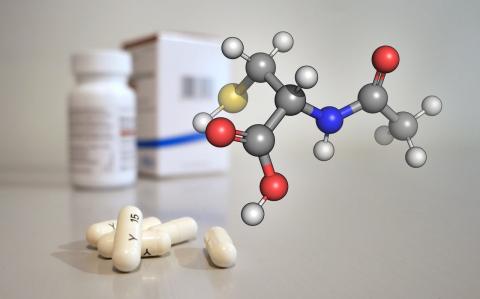Uncovering the antioxidant mechanisms of N-acetyl cysteine

N-acetyl cysteine is often used as antioxidant, but its mechanism of action is obscure. Novel literature data brings an unexpected turn to this question.
Literature Highlights by Flavia C. Meotti
Investigating the roles of reactive oxygen species in experimental and clinical studies is usually a challenge either to experts in the field or to researchers from other fields. Since these species are, as their name suggest, reactive, they are transient and rarely reach a steady state. Likewise, their track is hard to follow because cells have evolved to rapidly regenerate the intracellular redox state. Therefore, researchers usually opt to use antioxidants to confirm the participation of reactive oxygen species in specific events. A widely used antioxidant is N-acetyl cysteine (NAC), however the exact antioxidant mechanisms of NAC are incompletely known. The traditionally accepted mechanism is that NAC behaves as a source of cysteine to glutathione synthesis. However, the limited increase in GSH levels documented after NAC treatment indicates that NAC may act by alternative pathways to protect against oxidants. Another claimed mechanism is that NAC is a direct scavenger of reactive oxygen species. However, the latter is highly unlikely, because the very low rate constants of these reactions pose a crucial kinetic constraint. Recenly, Ezerina et al provided an elegant paradigm swithc in this subject. NAC was demonstrated to be a source of hydrogen sulfide and to generate hydropersulfides in thiol proteins in the mitochondrial matrix. The authors delineated the intracellular catabolism of NAC and the formation of sulfane sulfur species. These hydropersulfides are more reactive than their respective thiol precursors and can therefore directly scavenger oxidants. A relevant conclusion from this study was that the metabolism of NAC inside cells and production of sulfane sulfur species are likely the main contributors to the rapid and frequently observed antioxidative and cytoprotective effects of NAC. Different thiol proteins will present varied susceptibility to the formation of these hydropersulfides and so NAC might distinctively affect such redox pathways. This certainly should be considered when inferring the effects of NAC as a global antioxidant. If we already knew that reactive intermediate scavenging was not a mechanism of NAC effects but did not have a clear mechanism to cite, now we are well grounded to start considering such a novel mechanism.
Related article:
- D. Ezeriņa, Y. Takano, K. Hanaoka, Y. Urano, T. P. Dick. N-Acetyl Cysteine Functions as a Fast-Acting Antioxidant by Triggering Intracellular H2S and Sulfane Sulfur Production Cell Chemical Biology, 25(4): 447–59, 2018 | doi: 10.1016/j.chembiol.2018.01.011
Flavia C. Meotti, PhD. Professor at Department of Biochemistry,
Institute of Chemistry, University of São Paulo, Brazil
Add new comment